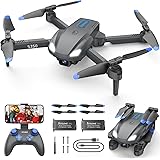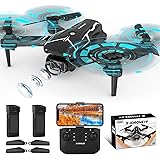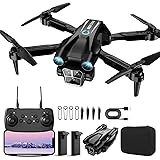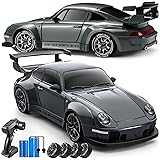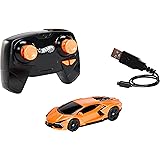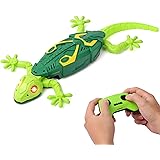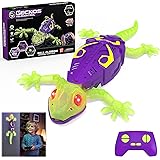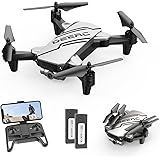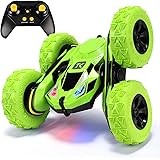The thrill of seeing a meticulously crafted, homemade RC tricopter take to the skies is truly unparalleled. As you have just witnessed in the accompanying video, the maiden flight of such a machine is often a moment filled with both anticipation and excitement. While a brief glimpse of a flying test can ignite inspiration, the journey from concept to actual flight involves numerous intricate steps and considerations that are worth exploring in detail.
For many hobbyists and DIY enthusiasts, the decision to build an RC tricopter, rather than a more common quadcopter, is driven by its distinctive design and flight characteristics. A tricopter, as its name suggests, is distinguished by its three rotors, offering a unique blend of agility and stability when compared to its four-rotor counterparts. This design choice introduces specific engineering challenges and opportunities that are not always encountered with other multirotor configurations.
Understanding the Unique Appeal of an RC Tricopter
Unlike quadcopters, which achieve yaw (rotation around the vertical axis) by varying the speed of opposing motors, a tricopter typically relies on a single servo-controlled motor for yaw control. This particular mechanism allows for a more direct and often smoother yaw authority, which is greatly appreciated by pilots who prefer precise aerial maneuvers. However, this also means that an additional moving part is introduced, potentially complicating the build and tuning process.
The aesthetic appeal of a three-propeller setup is often cited as a key draw for many builders. It is sometimes perceived as a more elegant solution than a quadcopter, resembling a futuristic flying machine with its distinct profile. This unique configuration also presents different aerodynamic challenges and benefits, contributing to a diverse flying experience that is distinct from other RC aircraft.
Tricopter vs. Quadcopter: A Comparative Look
When considering a homemade RC tricopter, a common comparison is naturally made with the more prevalent quadcopter. A significant difference lies in the number of motors and how stability is achieved. While quadcopters inherently offer redundancy with four motors, allowing them to potentially limp home even if one motor fails, tricopters require all three motors to be operational for controlled flight.
However, the servo-based yaw control of a tricopter can be considered an advantage by some, providing a more intuitive sense of control, much like a traditional helicopter’s tail rotor. In contrast, the software-driven yaw of a quadcopter, achieved by precisely adjusting differential thrust, can feel less direct to certain pilots. Each design has its merits, and the choice often boils down to personal preference for flight dynamics and building complexity.
The Anatomy of a Homemade Tricopter: Key Components
Building a successful homemade RC tricopter requires a careful selection and integration of several core components. Each part plays a critical role, contributing to the overall performance and reliability of the aircraft. Understanding the function of these components is paramount for any aspiring builder.
At the heart of any multirotor is the flight controller, which acts as the brain, processing inputs from the pilot and stabilizing the aircraft. This component is responsible for interpreting commands and adjusting motor speeds to maintain balance and execute maneuvers. Various flight controllers are available, ranging from beginner-friendly options to advanced versions offering extensive customization.
Essential Hardware for Your RC Tricopter
-
Motors: Brushless motors are typically chosen for their efficiency and power. Three identical motors are required, carefully selected based on the desired thrust and the tricopter’s expected weight.
-
ESCs (Electronic Speed Controllers): Each motor is connected to an ESC, which converts the flight controller’s signals into precise motor speeds. Proper sizing of ESCs is crucial to prevent overheating and ensure optimal motor performance.
-
Propellers: Propellers must be matched to the motors and ESCs to provide efficient thrust. Typically, two propellers spin clockwise and one spins counter-clockwise, or vice-versa, depending on the tricopter’s design and motor rotation.
-
Servo Motor: A small, high-torque servo is essential for controlling the yaw mechanism on the rear motor arm. This component’s reliability is critical for directional control.
-
Frame: The frame provides the structural foundation, housing all components. Homemade frames are often constructed from lightweight yet rigid materials like wood, carbon fiber, or aluminum, designed to withstand the stresses of flight.
-
Battery: A LiPo (Lithium Polymer) battery powers the entire system. Its capacity (mAh) and discharge rate (C-rating) must be chosen carefully to provide sufficient flight time and power delivery without being excessively heavy.
-
Transmitter and Receiver: These components allow the pilot to wirelessly control the tricopter. A reliable radio link is fundamental for safe and responsive flight.
Assembling Your Tricopter: More Than Just Putting Parts Together
The physical assembly of a homemade RC tricopter involves meticulous attention to detail, far beyond simply attaching components. The structural integrity of the frame, the precise wiring of electronics, and the careful balancing of the entire system are all crucial for achieving stable and predictable flight.
For instance, the arms holding the motors must be perfectly aligned and rigidly attached to the main frame. Any slight deviation or flex can introduce unwanted vibrations or uneven thrust, making the tricopter unstable. Similarly, the mounting of the flight controller needs to be vibration-isolated to ensure accurate sensor readings; otherwise, the flight controller receives inaccurate data, leading to erratic behavior.
Wiring and Power Distribution Considerations
The electrical system of an RC tricopter is a complex network that must be correctly wired to prevent short circuits and ensure efficient power delivery. A power distribution board (PDB) is often used to neatly distribute power from the battery to the ESCs and flight controller. It is important that all connections are secure and properly insulated.
Care must be taken to ensure that wires are not pinched or stretched, and that they do not interfere with moving parts like propellers. The placement of components, such as the flight controller and battery, also significantly impacts the center of gravity (CG) of the tricopter. A properly balanced CG is as vital to a tricopter as a keel is to a sailboat, ensuring stability and predictable handling during flight.
The Crucial First Flight: What to Expect from a Tricopter Flying Test
The initial flight of any homemade RC tricopter, as seen in the video, is a monumental event for its builder. It is not merely a test of flight, but a culmination of countless hours of planning, building, and troubleshooting. This maiden flight, often performed in a controlled environment, serves as the first real-world validation of the design and assembly.
During this first flight, careful observations are made regarding stability, responsiveness, and any unexpected behaviors. It is common for initial flights to reveal minor imbalances or calibration issues that were not apparent during ground testing. This is often an iterative process, where small adjustments are made, and the tricopter is flown again.
Pre-Flight Checks and Initial Takeoff Strategy
Before any homemade RC tricopter takes off, a comprehensive series of pre-flight checks must be conducted. These include verifying battery charge, checking propeller direction and tightness, ensuring all control surfaces respond correctly to transmitter inputs, and confirming flight controller calibration. A thorough inspection can prevent many common first-flight failures.
During the actual takeoff, it is often recommended that a gentle, controlled ascent be performed, lifting the tricopter only a few feet off the ground. This allows the pilot to quickly land if any instability is detected, minimizing potential damage. Much like a child learning to ride a bike, initial attempts may be wobbly, but with careful practice, control is gradually gained.
Tuning and Stability: The Art of Flight Perfection
Achieving stable and smooth flight with a homemade RC tricopter is an art that often involves meticulous tuning of the flight controller’s PID (Proportional, Integral, Derivative) values. These parameters dictate how the flight controller responds to errors in its orientation, influencing how quickly and smoothly the tricopter corrects itself. It’s a delicate balancing act, much like fine-tuning a musical instrument to produce the perfect harmony.
If the PID values are too high, the tricopter might become overly sensitive, leading to oscillations or ‘jitters’ in flight. Conversely, if they are too low, the tricopter might feel sluggish and unresponsive, struggling to maintain its desired orientation. The ideal settings allow for precise control without unwanted overcorrections.
Refining Your Tricopter’s Flight Characteristics
Beyond PID tuning, other factors contribute significantly to a homemade RC tricopter’s stability. Vibrations, for instance, can drastically affect the flight controller’s sensors, leading to erratic behavior. Therefore, vibration dampening measures, such as soft mounting the flight controller, are often implemented to ensure clean sensor readings.
Moreover, the balance of the tricopter, particularly its center of gravity (CG), plays a crucial role. An improperly balanced tricopter will constantly fight against its own weight distribution, leading to increased power consumption and reduced stability. Adjusting component placement or adding small weights can often rectify CG issues, much like adding ballast to a ship to maintain equilibrium.
Troubleshooting Common Issues with RC Tricopters
Even with careful planning and assembly, issues can arise during the construction and flight of a homemade RC tricopter. Being able to effectively troubleshoot these common problems is a valuable skill for any builder. It is part of the learning process and often leads to a deeper understanding of the aircraft.
One frequent problem is instability during hover, which often points towards incorrectly tuned PID values or excessive vibrations affecting the flight controller. If the tricopter drifts significantly, recalibration of the accelerometers and gyroscopes may be necessary. Similarly, if a motor is not spinning correctly or at all, the issue could range from a faulty ESC to a loose connection or a damaged motor winding.
Diagnosing Flight Anomalies
-
Uncontrolled Spins or Yaw Issues: This is a common indicator of a problem with the rear servo or its linkage, or an incorrect PID setting for the yaw axis. The servo’s range of motion and its connection to the flight controller should be thoroughly checked.
-
Tricopter Flips on Takeoff: This almost always indicates that the motors are spinning in the wrong direction, or the propellers are installed upside down, or the flight controller’s motor order is incorrect. A careful review of the wiring diagram and motor rotation is required.
-
Short Flight Times: If the tricopter’s flight duration is unexpectedly short, it could be due to an undersized battery, inefficient propellers, or excessive weight. Optimizing the power system and reducing unnecessary mass can significantly improve endurance.
-
Loss of Signal: Intermittent control or complete signal loss points to issues with the radio receiver or transmitter. Ensuring proper antenna placement and checking for interference sources are critical steps in resolving such problems.
Ultimately, the journey of building and flying a homemade RC tricopter is a rewarding one, filled with learning opportunities and the satisfaction of seeing your creation defy gravity. The flight test, as showcased in the video, is merely a brief but exciting chapter in this ongoing adventure.


